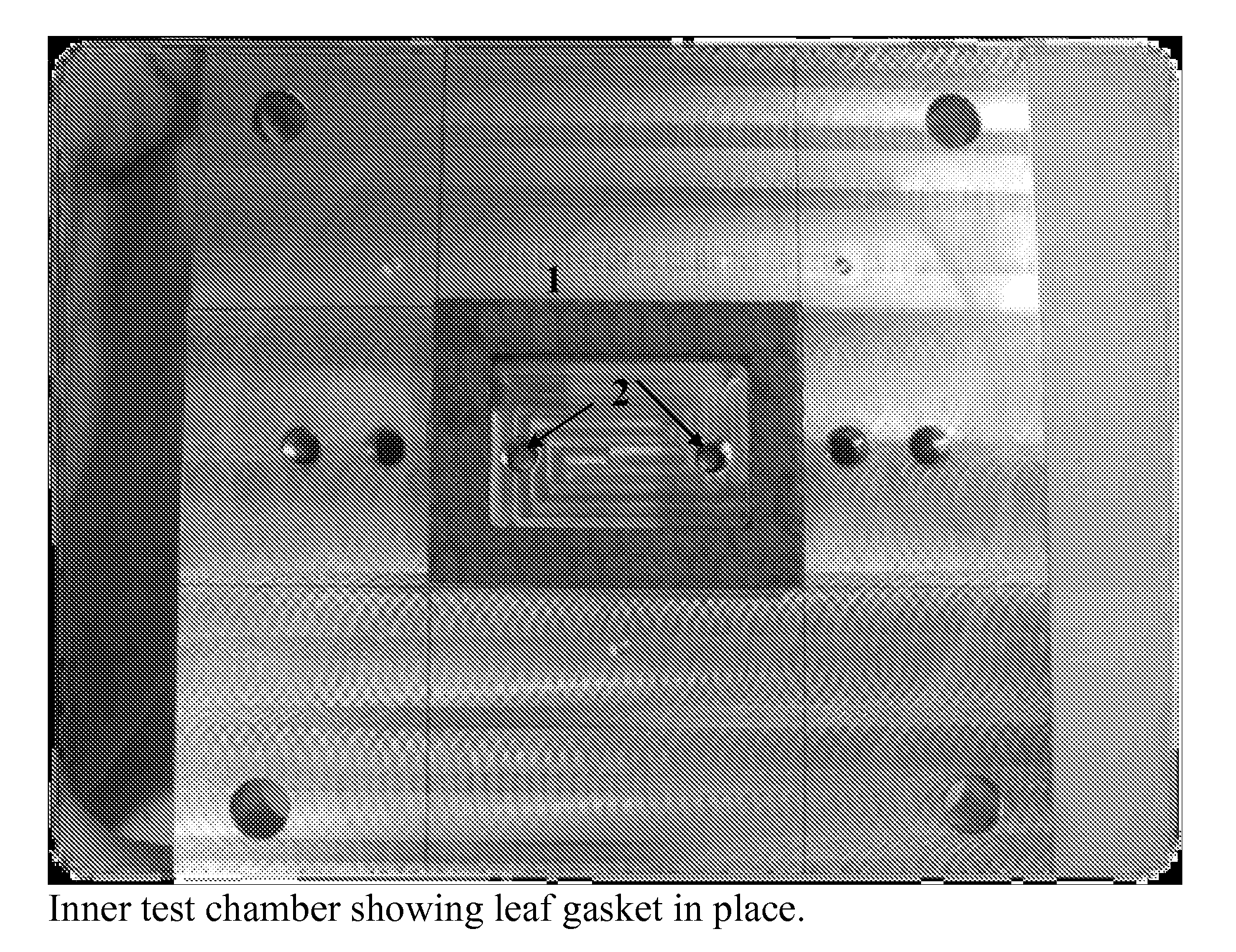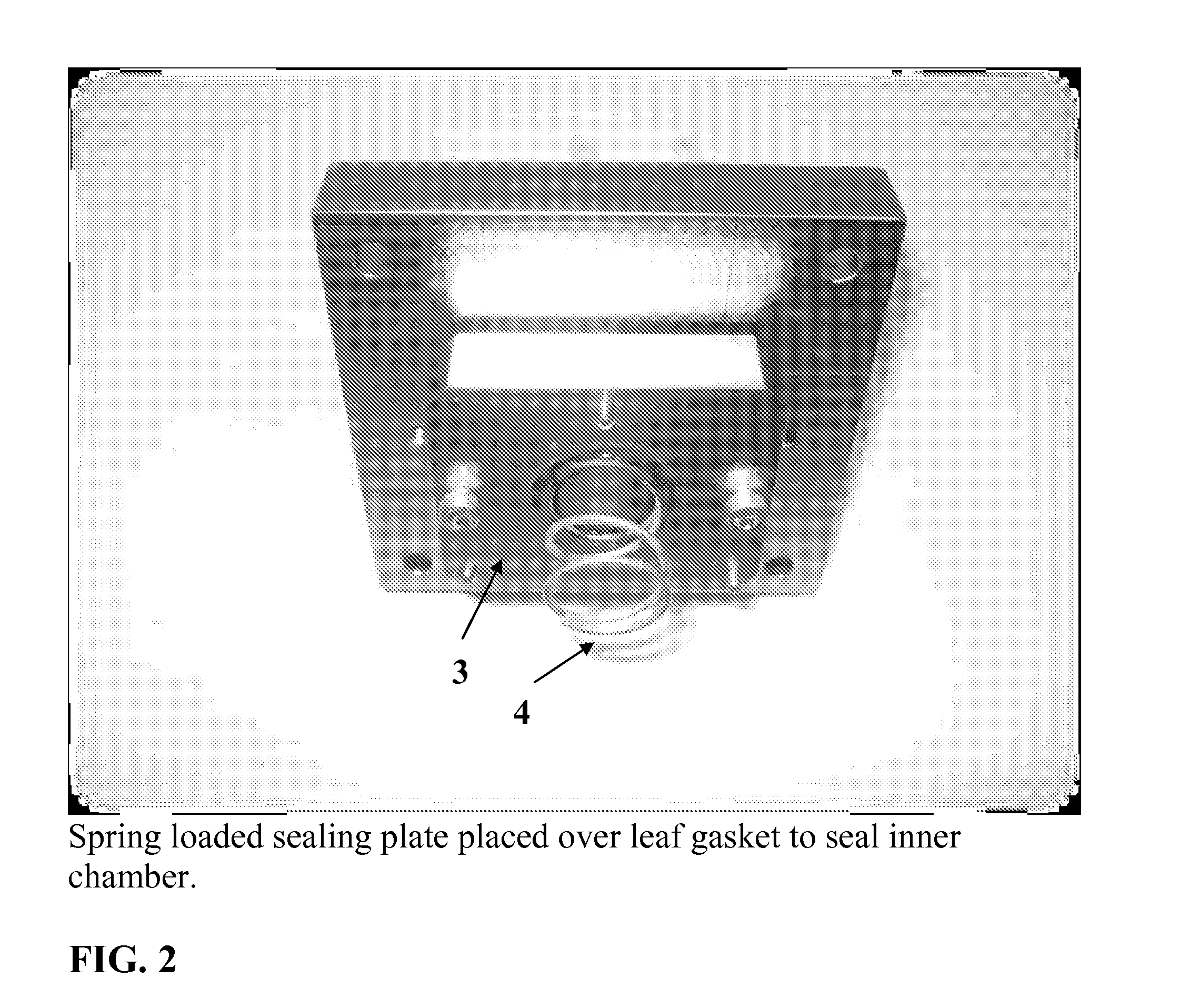Diffusion and sorption free gaskets for gas exchange measurement systems
a gas exchange measurement and free gasket technology, applied in the direction of engine seals, mechanical equipment, engine components, etc., can solve the problems of measurement error, the inability to differentiate these parasitic gains and losses, so as to reduce or eliminate reduce or eliminate the interfacial diffusion of gases, and reduce or eliminate the effect of reducing or eliminating the sorption of h2o
- Summary
- Abstract
- Description
- Claims
- Application Information
AI Technical Summary
Benefits of technology
Problems solved by technology
Method used
Image
Examples
Embodiment Construction
[0026]The present invention provides gaskets for use in gas exchange systems and more particularly gaskets for use in gas exchange systems used for photosynthesis, respiration and transpiration measurements.
[0027]According to various embodiments, gaskets are provided for use in gas exchange systems, which provide low diffusion through bulk material, sufficient compliance to conform to surface irregularities under low applied stresses, minimal interfacial diffusion, and / or low sorption properties, particularly of H2O vapor. For example, various embodiments effectively reduce or eliminate diffusion of gases such as CO2 and its isotopologues, H2O and its isotopologues, CH4 and its isotopologues, O2, N2, N2O, VOCs including but not limited to isoprene, and other gases.
[0028]The following experiments demonstrate that in traditional photosynthesis system leaf chamber gaskets, the primary diffusion occurs at gasket interfaces, not through the bulk gasket material. This is a fundamental par...
PUM
 Login to View More
Login to View More Abstract
Description
Claims
Application Information
 Login to View More
Login to View More - R&D
- Intellectual Property
- Life Sciences
- Materials
- Tech Scout
- Unparalleled Data Quality
- Higher Quality Content
- 60% Fewer Hallucinations
Browse by: Latest US Patents, China's latest patents, Technical Efficacy Thesaurus, Application Domain, Technology Topic, Popular Technical Reports.
© 2025 PatSnap. All rights reserved.Legal|Privacy policy|Modern Slavery Act Transparency Statement|Sitemap|About US| Contact US: help@patsnap.com



